Will cannabis users smoke their cars in Canada 2020 (or can “the Kestrel” make it in global auto electrification game)?
Aug 26th, 2010 | By C. M. W. Marcel | Category: In Brief
Jodie Emery, wife of Canada’s Prince of Pot (now unhappily in jail in the USA), has almost nothing to do with Canada’s new Cannabis Car. But she is a lot cuter than most of those more directly involved. Photo: Nick Procaylo, Vancouver Province.
Assuming it’s real, the recent CBC news story “Cannabis electric car to be made in Canada” offers various varieties of food for thought. In fact the story is so intriguing that it’s all too easy to think it’s too good to be true. This is just the CBC trying to get back at Stephen Harper, etc.
But if it is a hoax a lot of people have already fallen for it – including the deadly serious businessmen, Nathan Armstrong in Calgary and Steve Dallas in Toronto. And there are more than a dozen other recent reports on the net, to complement the bubbly rhetoric of the CBC.
The San Francisco Chronicle may have the most succinct account, headlined “Dude, where’s my cannabis car?” It reports: “Here’s one way to get college students to go to class: Assign them to build things with cannabis. Several Canadian companies are teaming up with polytechnic schools in Alberta, Quebec and Toronto to make an electric vehicle out of hemp. The cars will hold up to three passengers, reach 55 miles an hour and go for up to 100 miles without having to be recharged. The car, dubbed the Kestrel, is part of Canada’s push for EVs, called Project EVE.”
The Hindustan Times from India adds a few helpful further details. A protoype of the Kestrel “will be unveiled at the Electric Mobility Show in Vancouver next month. A consortium of 15 Canadian companies” is involved. The vehicle will have a “bio-composite body made of hemp” (the un-smokable or un-stone-able form of cannabis, as it were: so no Virginia, cannabis users will not really be able to smoke their new electric vehicles). And: “The first 20 cars will be delivered next year.”
If you crave still more details, try: “The Kestrel: Hemp Electric Car Being Developed By Motive Industries Inc.” ; “The Marijuana Car, ‘The Kestrel’ A Hemp Car, By Motive Industries” ; “Hemp drives green vehicle prototype” ; “Calgary driven to make hemp car” ; “Hippie’s dream car: EV made from hemp” ; “Canada’s Cannabis Car” ; “Canadians constructing cars from cannabis” ; “Canadian firms plan to try to make car from hemp” ; “Canadians build car from cannabis” ; and “Motive Industries’ Cannabis Composite EV Satisfies Your Need for Speed, Weed.”
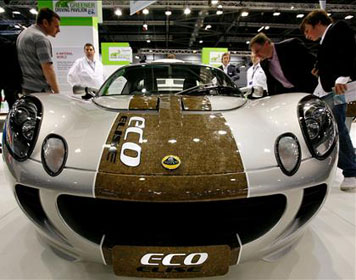
The Kestrel plans are not unprecedented. This version of the Lotus Eco Elise, shown at the British International Motor Show in London, England, July 23, 2008, has hemp or industrial cannabis composite body panels. Photo: Cate Gillon, Getty Images.
(This last item also notes, with some easy humour of the sort beloved by the great white hunter Dick Cheney: “In a move that will only strengthen the association between potheads and environmentalism, Motive Industries recently announced that it is working on Canada’s first biocomposite electric vehicle. The biocomposite in question? Hemp.” Oh, and btw, the counterweights editors have asked me to welcome the new Google ads to the site here – and to urge everyone to “patronize our advertisers.” The ads are nicely keyed to the site content. And every time you click on, oh say ten of them, you are helping to send an intern to Tim Horton’s for a small iced cappuccino.)
* * * *
Several other features of the CBC’s “Cannabis electric car to be made in Canada” are worth noting quickly, for those interested in pursuing the story at slightly greater length.

Nathan James Armstrong, Director and President of Motive Industries in Calgary – pioneers of the Kestrel prototype: “Canada’s First Bio-Composite Electric Vehicle.”
As Nathan Armstrong of Motive Industries in Calgary notes, eg: as open as it clearly is to easy humour nowadays, using lightweight hemp or industrial cannabis to build car bodies is “not an original idea.” Henry Ford experimented with the concept for a time in the 1940s. And much more recently, in the summer of 2008, Lotus in the UK unveiled “an environmentally-friendly version of its sporty roadster called Eco Elise” with “hemp (industrial cannabis) … on the car’s composite body panels.”
There are nonetheless two particular wrinkles about the use of industrial cannabis for the Kestrel – as planned by Project EVE, “an automotive industry collaboration founded by Motive and Toronto Electric, an Ontario material handling and electric motor company, to boost the production of electric vehicles and electric vehicle components in Canada.”
In the first place (and as explained by the Alberta provincial government): “ Effective March 12, 1998, the commercial production (including cultivation) of industrial hemp is now permitted in Canada, under licenses and authorization, issued by Health Canada.” Meanwhile: “hemp and marijuana are different varieties of Cannabis sativa, which is [still] classified as a controlled substance in the United States.”
So, for the time being at any rate, it is legal to make cannabis cars in Canada but not in the United States – despite the Harper minority government’s reactionary hostility towards the plight of “Canada’s Prince of Pot” Marc Emery, and the decriminalization of smokable marijuana, that can actually make you … well, feel alright?
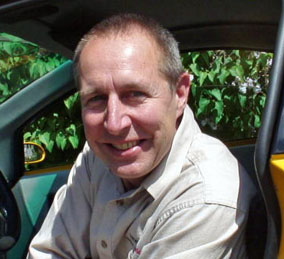
Steve Dallas, president, Toronto Electric – “working out an arrangement with Nathan Armstrong of Motive Industries in Calgary to see if Canada has the capacity, financially and technically, to participate in the electrification of the automotive industry that is now under way.”
It gets even a little better than this – from the standpoint of ironic juxtaposition in Stephen Harper’s current home province of Alberta (sometimes imagined to be also a home of the unfettered free market and manly government non-intervention).
As the CBC news website explains: “The car’s body will be made of an impact-resistant composite material produced from mats of hemp, a plant from the cannabis family. The material is being supplied by Alberta Innovates – Technology Futures, a provincial Crown corporation that provides technical services and funding to help commercialize new technologies. The hemp is being grown in Vegreville, Alta.”
Yet another wrinkle involves the name of the new Cannabis electric car to be made in Canada, “the Kestrel.” A UK website has noted that it isn’t exactly an original idea either. This is Canada after all, where at least half the geographic place names nowadays are not original, etc, etc. The province of Alberta itself, eg, “was named after Princess Louise Caroline Alberta, the fourth daughter of Queen Victoria” in the United Kingdom.
So, it has been argued by some allegedly wiser heads across the seas in the old mother country, Canada’s new “ Cannabis Car, built from hemp … should really be called the Kestrel II.” As it happens the “UK car firm BMC had a Kestrel … In 1965 ‘BMC added a Riley badged version to its ever expanding 1100/1300 range,’ says the motorbase.com, adding: ‘Available in 1100 Kestrel and later 1300 forms the new cars were little more than badge-engineered versions of the rest of the 1100/1300 family, being closely related to the MG variants [sic, or something like that] … Production disappeared along with the rest of the Riley marque in 1969.’”
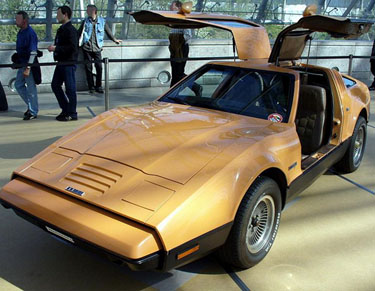
There are still a few Bricklins extant today, and they are intriguing. But the Kestrel is a lot more interesting and innovative – and has much deeper local business and technological roots.
Students of Canadian automotive history so far will want to note a very final wrinkle here as well. Whether the current plans for the Cannabis electric car to be made in Canada will finally succeed in an increasingly cruel and competitive global marketplace of course remains an open question. And the sad mid 1970s story of the Bricklin in New Brunswick sounds an inevitable cautionary note.
(And, to hear the note better, in the summer of 2010 interested inidividuals have been able to take in “The Bricklin: An Automobile Fantasy … A Musical by Allen Cole and Paul Ledoux, Directed by Alisa Palmer,” at the Fredericton Playhouse.)
To quote an apt enough summary from Wikipedia: “The Bricklin SV-1 was a gull-wing door sports car assembled in Saint John, New Brunswick, Canada. The body panels were manufactured in a separate plant in Minto, New Brunswick. Manufactured from 1974 until early 1976 for the US market, the car was the creation of Malcolm Bricklin, an American millionaire …Â Due to Bricklin’s lack of experience in the auto industry …Â the Bricklin factory was not able to produce vehicles fast enough to make a profit. As a result, only 2,854 cars were built before the company went into receivership, owing the New Brunswick government $23 million.”
There seems little doubt that the Kestrel in the 2010s will face at least as many challenges as the Bricklin in the 1970s. And of course who knows if it can ever be any kind of success?
At the same time, just on the most superficial surface of things, there are some vast differences between the Bricklin then and the Kestrel now. The New Brunswick government was just throwing too much good money after bad to an American playboy-grillionaire, in the hope of gaining some quick-fix local assembly jobs. The Alberta government is helping some aggressively entrepreneurial local businesses in Alberta, Ontario, and Quebec, in a more modest and sensible way.

Jodie Emery again – a “successful rerbel” who will apparently be running for the Green Party in Vancouver South, in the next Canadian federal election.
Whatever else, the Kestrel project shows that a lot has changed in Canada since the 1970s. Some things at least are clearly better now than they were then. Even if the Kestrel project never meets its highest aspirations, it will make some more things better still. With the Electric Mobility Show in Vancouver now only a matter of weeks away, I would like to raise several big tumblers of “Bottled-in-British-Columbia” Baby Canadian Champagne to Nathan Armstrong and Steve Dallas and everyone else involved. And if some politicians and bureaucrats in Ottawa today are not too happy about all this, well that’s just the icing on the accompanying cake.

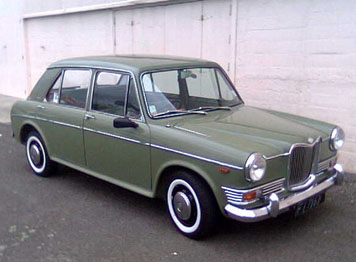
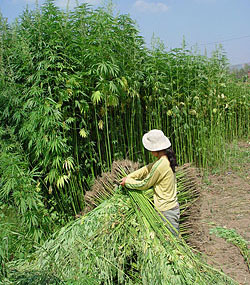


great blog thank you
Sweet post, I have been reading your blog for awhile now and feel I should some how contribute so I have decided to stat commenting on it. I look forward to reading more and commenting more. Thanks!